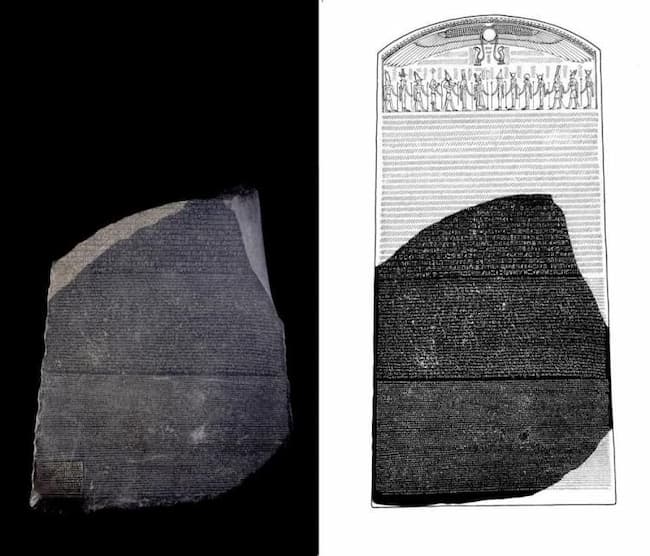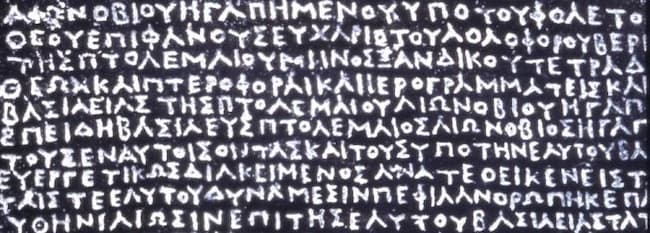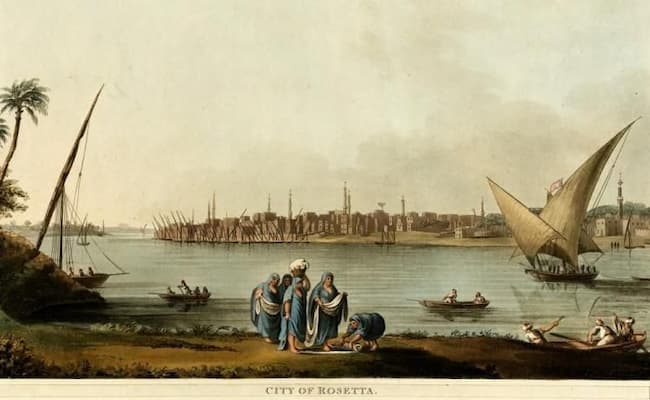In the annals of historical discovery, few artifacts hold as much intrigue and significance as the legendary Rosetta Stone.

Unearthed in Egypt in 1799, this enigmatic multilingual tablet has played a pivotal role in unraveling the mysteries of ancient civilizations. Join us as we delve into the captivating story of the Rosetta Stone, a key that unlocked the secrets of the past.
Unveiling the Enigma: The Rosetta Stone Unearthed
Boldly emerging from the sands of the Nile Delta, the Rosetta Stone made its grand debut in 1799. Its unassuming appearance belied the monumental significance it would soon hold. Composed of black basalt, the stone bore an inscription of a decree issued by Ptolemy V Epiphanes in 196 BC, commemorating the benefactions he bestowed upon Egyptian temples.
Linguistic Labyrinth: Three Languages, One Clue

Central to the Rosetta Stone’s mystique is its trilingual nature. The decree etched onto the stone is a linguistic mosaic, featuring text in three distinct scripts: Ancient Egyptian hieroglyphs, Demotic (a cursive script used for administrative purposes), and Ancient Greek. This linguistic triad would ultimately prove to be the key that unlocked a treasure trove of forgotten knowledge.
Enter the Scholars: Deciphering Hieroglyphs
For centuries, the enigmatic hieroglyphs of ancient Egypt had eluded decipherment, shrouding the secrets of an illustrious civilization. The Rosetta Stone, like a tantalizing puzzle, held the missing pieces. Enter scholars, most notably Jean-François Champollion, whose unwavering determination led to the groundbreaking decipherment of hieroglyphs in the 19th century.
A Window into Antiquity: The Decipherment’s Impact
The decipherment of hieroglyphs marked a watershed moment in the study of Egyptology. Suddenly, a wealth of inscriptions, documents, and monuments became accessible, offering unprecedented insights into the culture, religion, and daily life of ancient Egypt. The Rosetta Stone was no longer just an artifact; it was a portal to a bygone era.
The Power of Context: How the Rosetta Stone Works
Much like understanding a new language, deciphering hieroglyphs hinged on contextual clues. By comparing the known Greek text on the Rosetta Stone with the unknown Egyptian inscriptions, scholars pieced together the phonetic and grammatical nuances of hieroglyphs. It was a feat akin to deciphering an ancient code—a testament to human intellect and perseverance.
Beyond Language: A Symbol of Human Curiosity
The Rosetta Stone transcends its linguistic significance to become a symbol of human curiosity and ingenuity. It reminds us that the quest for knowledge knows no bounds and that our collective determination can overcome even the most inscrutable of challenges. Just as the Rosetta Stone bridged gaps in understanding, it continues to inspire us to bridge gaps in knowledge and connect with our past.
Conclusion: Echoes of Ancient Voices

The Rosetta Stone stands as a testament to the resilience of the human spirit and the unyielding pursuit of understanding. It symbolizes the power of context, the beauty of language, and the triumph of decipherment. As we gaze upon this humble black basalt slab, we are reminded that the past is a puzzle waiting to be solved—one word, one script, one stone at a time.
FAQs
FAQ 1: Why is the Rosetta Stone important?
The Rosetta Stone holds immense importance as it provided the key to deciphering ancient Egyptian hieroglyphs, unlocking a treasure trove of historical and cultural knowledge.
FAQ 2: Where is the Rosetta Stone now?
The Rosetta Stone is currently housed in the British Museum in London, where it continues to attract millions of visitors each year.

FAQ 3: Who deciphered the Rosetta Stone?
French scholar Jean-François Champollion is credited with successfully deciphering the hieroglyphs on the Rosetta Stone and making a significant contribution to Egyptology.
FAQ 4: How did the Rosetta Stone impact the study of ancient Egypt?
The decipherment of the Rosetta Stone led to a profound understanding of ancient Egyptian culture, history, and language, revolutionizing the field of Egyptology.
FAQ 5: Are there other multilingual artifacts like the Rosetta Stone?
While the Rosetta Stone remains one of the most famous multilingual artifacts, there are other examples in history where inscriptions in multiple languages have aided in decipherment and historical understanding.

